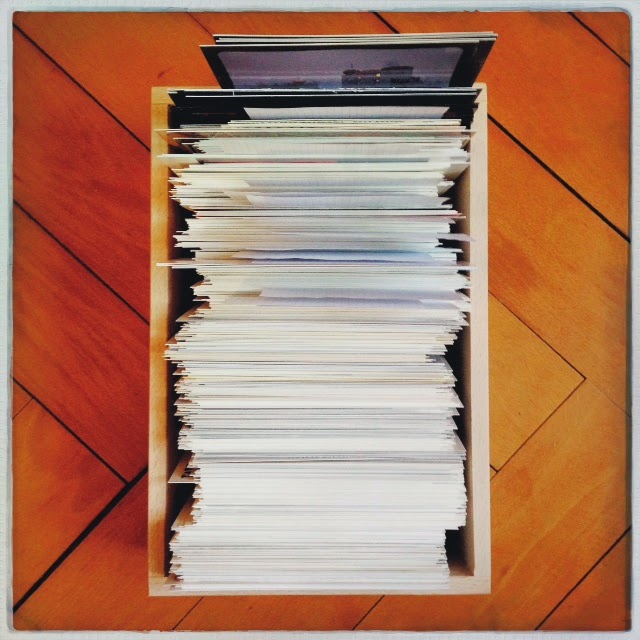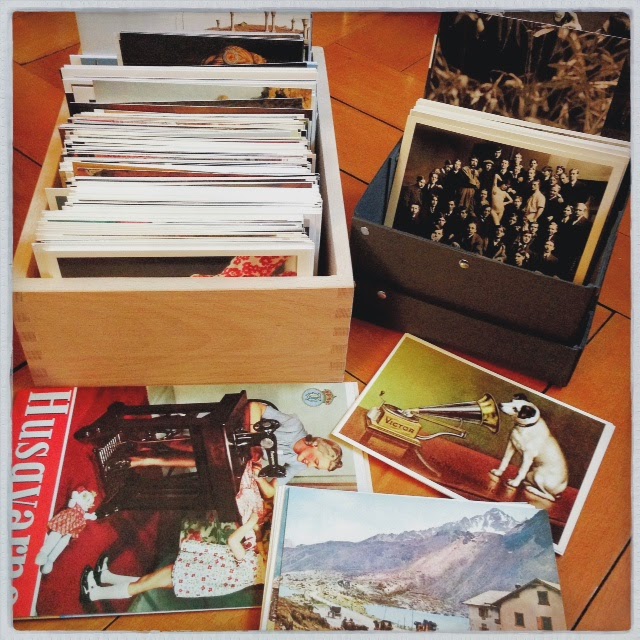I love art postcards, and I can't leave a museum without having purchased at least half of the cards available in the shop. They're not only a nice memory of the places themselves, and of the paintings that most captured my interest (although they never seem to have a postcards of the ones that spoke most to me) but also a wealth of inspiration and reference. I used to put them into photo pocket sheets and keep them in two big, pretty folders. As the cards got more and more, the folders got fuller, and over-full, and eventually so heavy and bulky that they became hard to handle. With the result that they've been sitting on the bottom shelf of my studio book cabinet for years, untouched.
Being pretty much useless in this state, I decided to store them in a way that makes them more accessible and easier to use and work with. I bought a pretty wooden box as well as a smaller cardboard one, and took the cards out of their pockets. The boxes filled up very quickly, and the wooden one (reserved for just art cards) is already full. Too full, actually. I think I need to get another box. I want to keep them easily accessible, to be able to look through them, which isn't possible if they're sitting too tightly.
Apart from the art reproductions, there's a whole pile of other cards - reproductions of old monochrome and (hand)coloured photos (and some newer ones too), old views of towns and landscapes, old advertisements from the times when they were hand drawn and painted by artists, manuscript illuminations, and more. Those went into the cardboard box.
Now the only thing that needs to be done is to sort them in some way or other. Alphabetically? Individual artists? Genre? Style, subject matter, art movement, era, medium? I'm sure there's a whole lot more options to consider. I intended to sort them by individual artists, but on second thoughts, it will probably be more of a mix of different criteria. Whatever makes them most useful to work with. While going through all of them, I discovered so many forgotten treasures and memories, and I can't wait to incorporate these, and other collected images, into my work flow. And to make more time for museum visits - and buy more postcards :):




